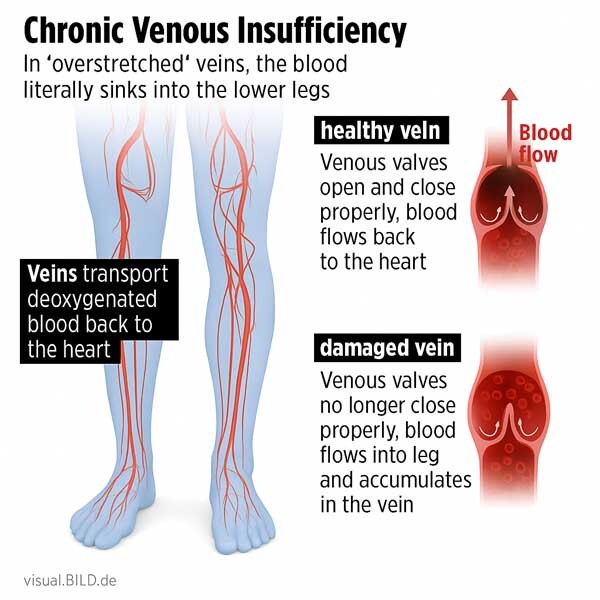News Staff![]() 5 hours ago
5 hours ago
80 views 0 Comments 0 Likes 0 Reviews

Symptoms, Causes, and Treatment: Understanding Chronic Venous Insufficiency—and President Trump’s Diagnosis
The White House confirmed that President Donald Trump has been diagnosed with chronic venous insufficiency, a common vascular condition that occurs when the valves in the veins of the legs weaken or fail, allowing blood to pool instead of flowing efficiently back to the heart. This increased pressure can cause swelling, visible varicose veins, skin changes, and, in more advanced cases, leg ulcers. It is a widespread condition, particularly among older adults, and while it is not life-threatening when managed properly, it does require ongoing care.
Chronic venous insufficiency develops when the vein walls or valves are damaged. Normally, deep and superficial veins in the legs work together to move blood upward against gravity, with the calf muscles acting like a natural pump during walking. Small valves inside the veins prevent the blood from flowing backward, but if they fail to close properly, venous pressure rises. Over time, this can cause symptoms such as heaviness, aching, swelling, discoloration, itching, and visible spider or varicose veins. In more advanced stages, the skin may harden, wounds may heal poorly, and painful ulcers may form.
While the prevalence varies across studies and regions, millions of adults in the United States live with chronic venous insufficiency, with rates increasing sharply with age. It can be influenced by factors such as genetics, prolonged standing, obesity, pregnancy, and a history of vein clots. Early recognition is important, as symptoms may develop gradually and can be mistaken for minor circulation problems.
Treatment focuses on relieving symptoms and slowing progression. Compression stockings remain the most common therapy, helping to support blood flow and reduce swelling. Elevating the legs, regular exercise, weight management, and avoiding prolonged periods of sitting or standing are also important. In cases where conservative therapy is insufficient, minimally invasive procedures such as laser or radiofrequency ablation can close faulty veins and restore more efficient circulation. Although the condition cannot be cured, it can be managed successfully to maintain quality of life.
According to the White House, President Trump’s diagnosis came after mild swelling in his lower legs was noted during a routine evaluation. Medical tests ruled out more serious conditions such as deep vein thrombosis, arterial disease, heart failure, or kidney problems. Officials emphasized that the President remains in excellent health and continues to carry out his duties at full capacity. His doctors have recommended ongoing monitoring and standard measures to manage the condition, which is common among individuals in his age group and does not affect his ability to work.

At Desert Local News, connections are everything. We're not just another social networking platform—we're a lively hub where people from all walks of life come together to share stories, spark ideas, and grow together. Here, creativity flourishes, communities grow stronger, and conversations spark global awareness.
Comments